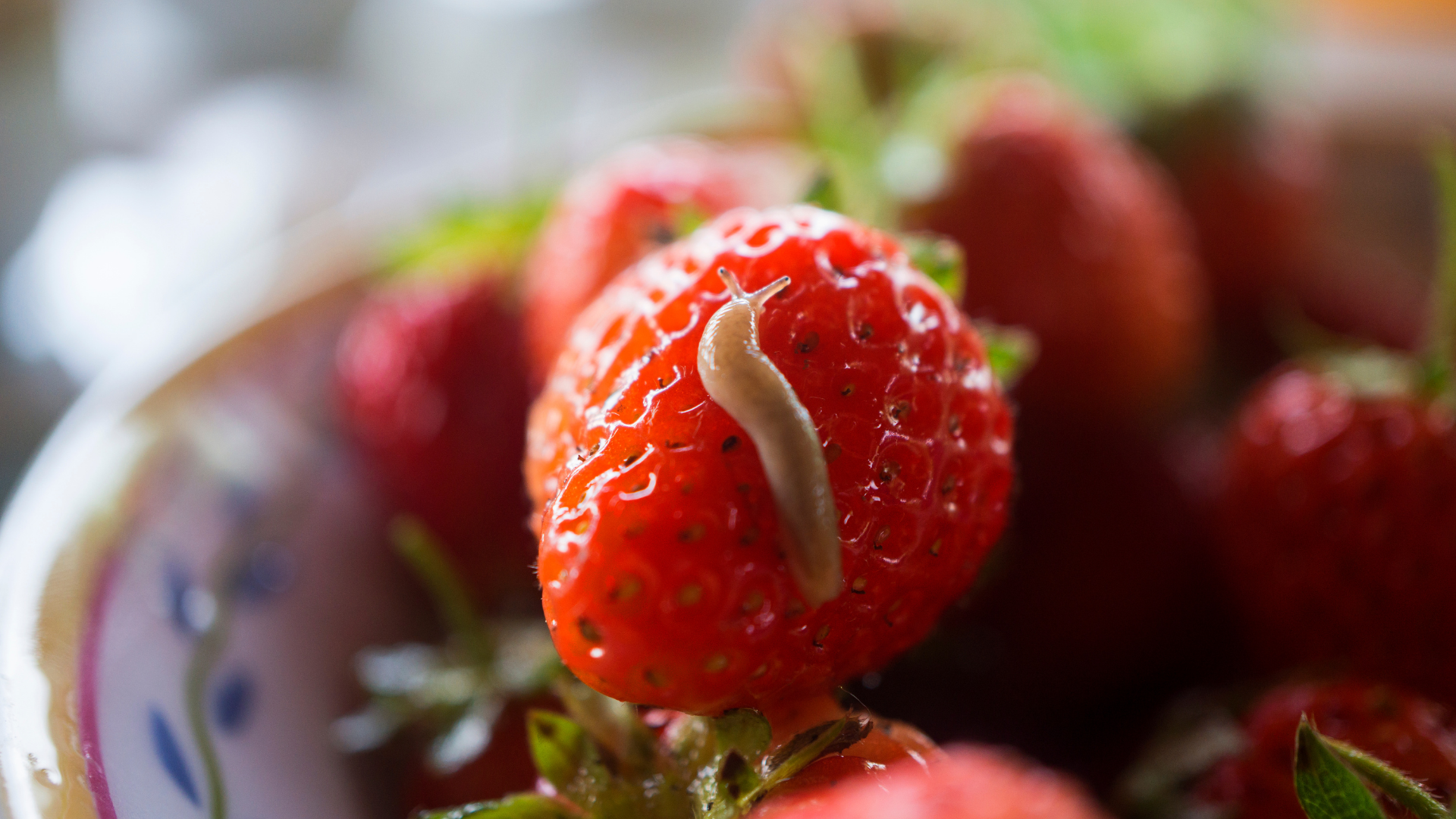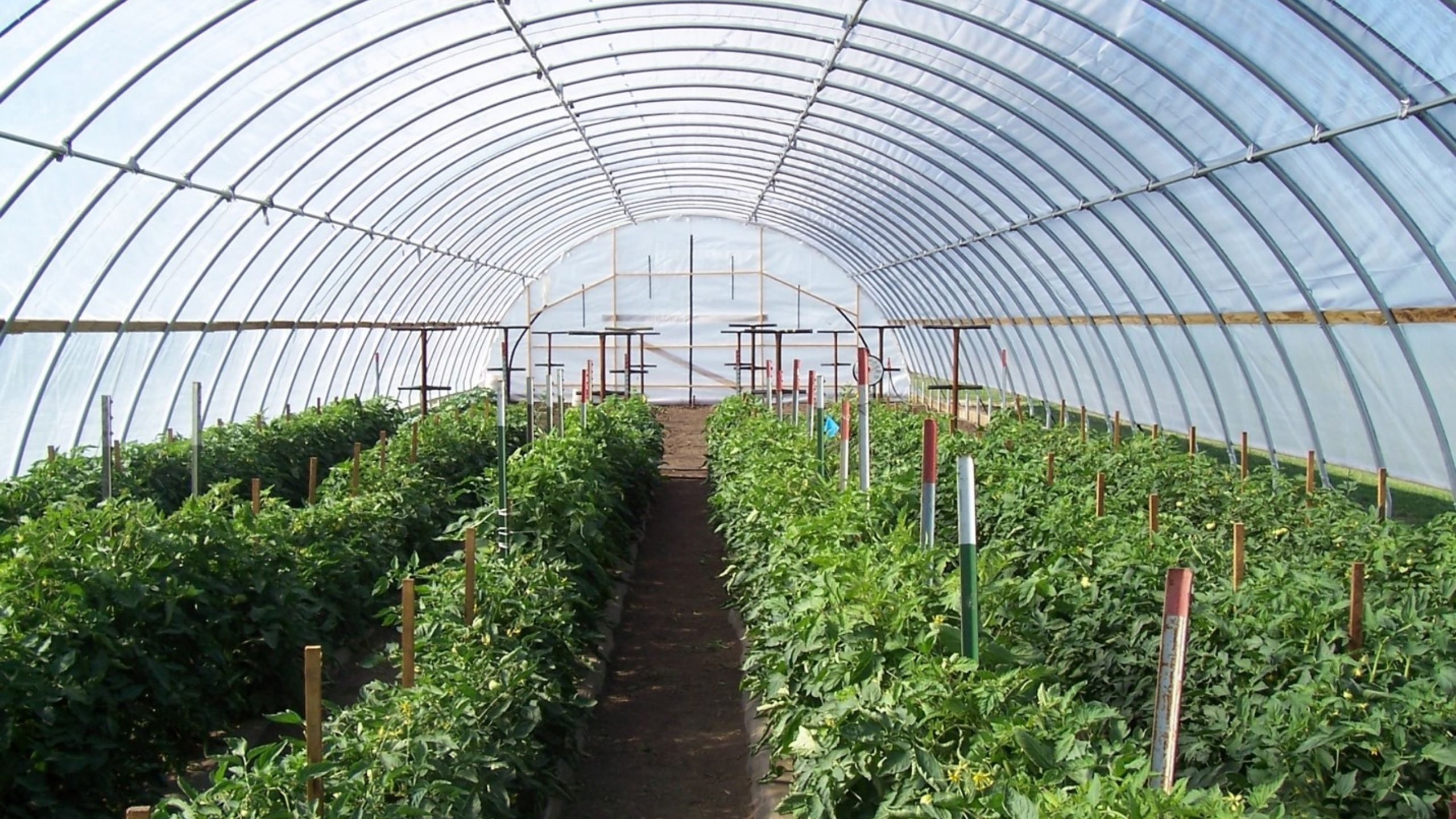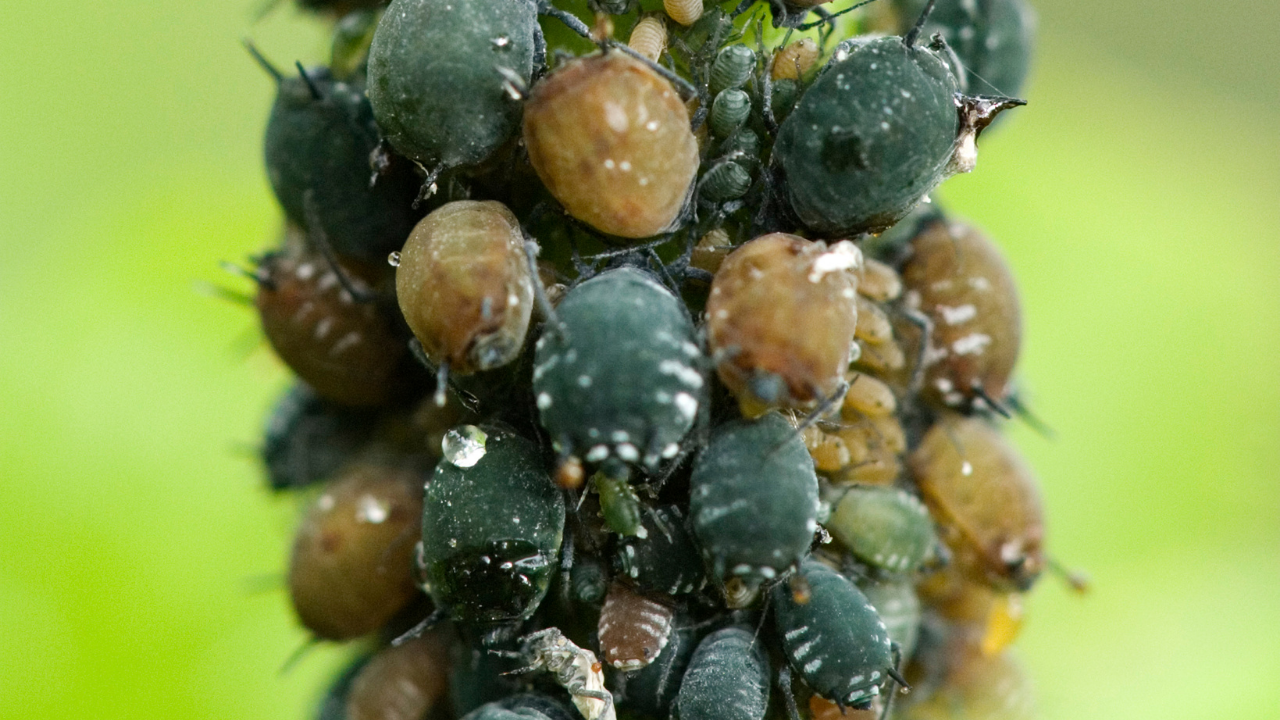Thrips
High Tunnel Pest Management
March 2019
Nick Volesky, Vegetable IPM Associate • Marion Murray, Extension IPM Specialist

Fig. 1. Some weed species that grow in or near high tunnels can serve as hosts for thrips species. Image courtesy of University of West Virginia - Extension
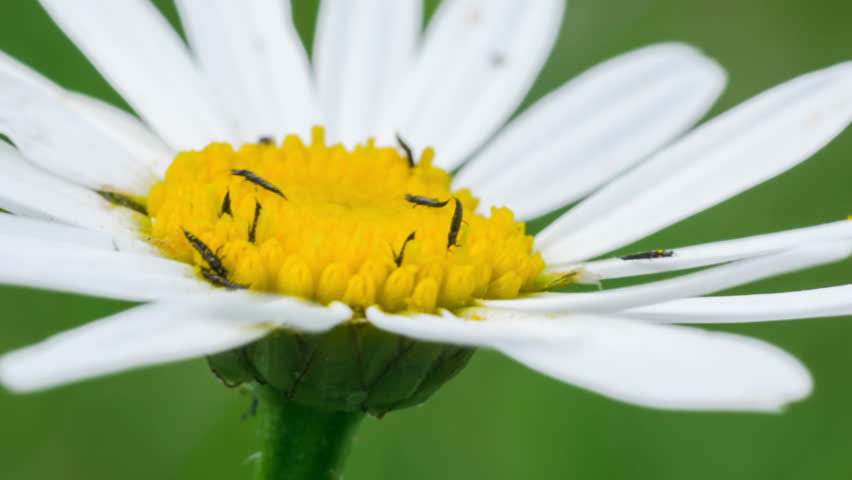 Fig. 2. Thrips can damage charmomiles and other cut flowers that may be grown in high tunnels. Image courtesy of ShutterStock.
Fig. 2. Thrips can damage charmomiles and other cut flowers that may be grown in high tunnels. Image courtesy of ShutterStock.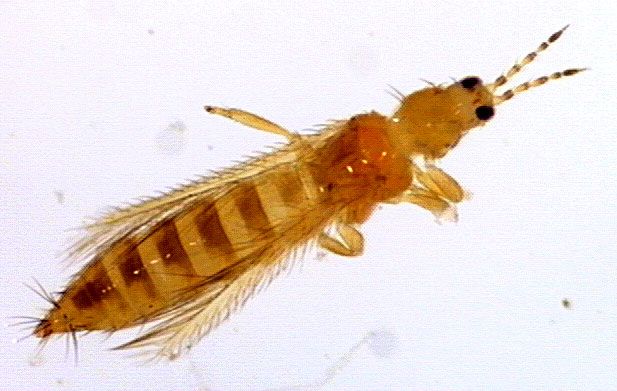 Fig. 3. Western flower thrips (Frankliniella occidentalis). Image courtesy of Kansas State University - Entomology.
Fig. 3. Western flower thrips (Frankliniella occidentalis). Image courtesy of Kansas State University - Entomology.
Fig. 4. Onion thrips (Thrips tabaci). Image courtesy of Centre for Biodiversity Genomics.
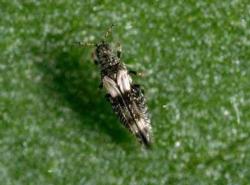
Fig. 5. Bean thrips (Caliothrips fasciatus). Image courtesy of University of California, Division of Agriculture and Natural Resources.
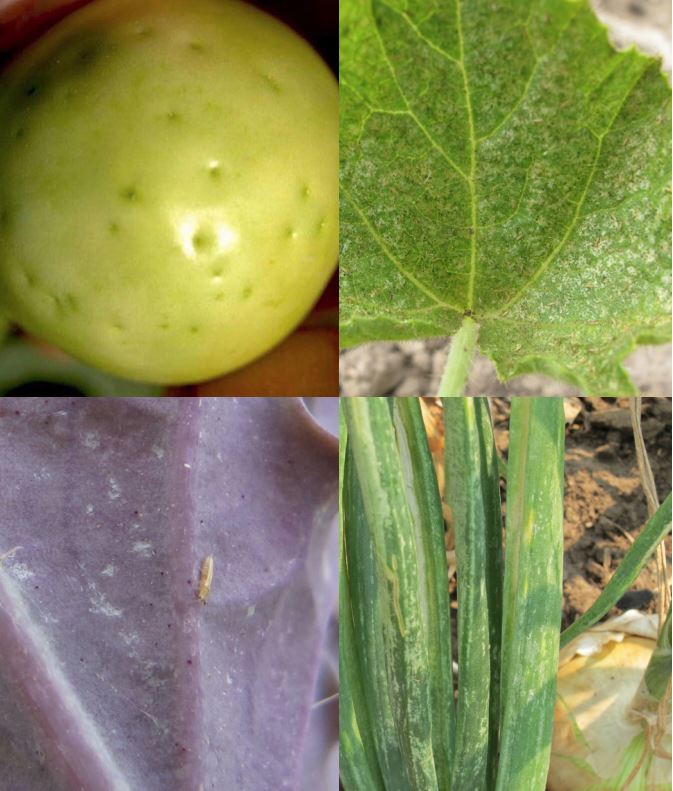
Fig. 6. Thrips oviposition damage on young tomato fruit (top left), mottling on squash foliage (top right), mottling on onion foliage (bottom right), thrip damage to onion leaves (bottom right).
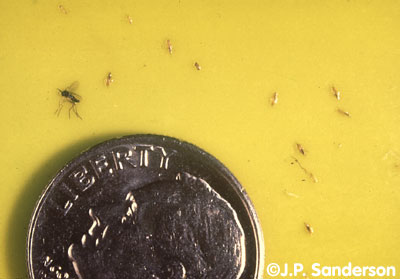
Fig. 7. Yellow sticky traps are effective as a monitoring tool for thrips, which will be the smallest insect on the trap. Image courtesy of J. P. Sanderson.
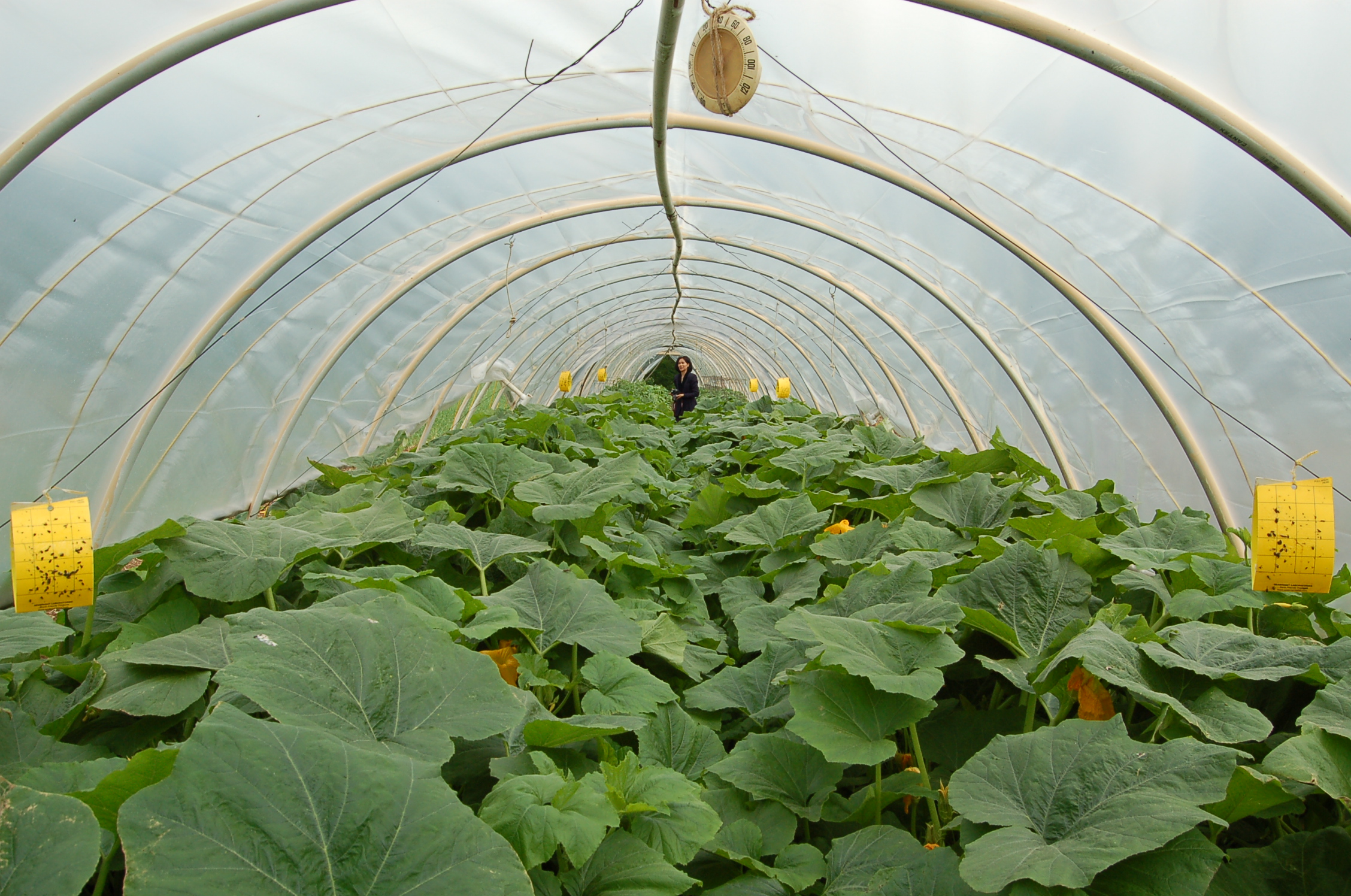
Fig. 8. Placing yellow sticky traps inside high tunnels is on important monitoring practice for thrips. Image courtesy of Arkansas Sustainable Agriculture.

Fig. 9. Minute pirate bug (Orius insidosus) consuming a thrips. Image courtesy of Ontario Ministry of Agriculture.

Fig. 10. Predatory thrips such as the banded thrips are important natural enemies. Image courtesy of kcur.org.
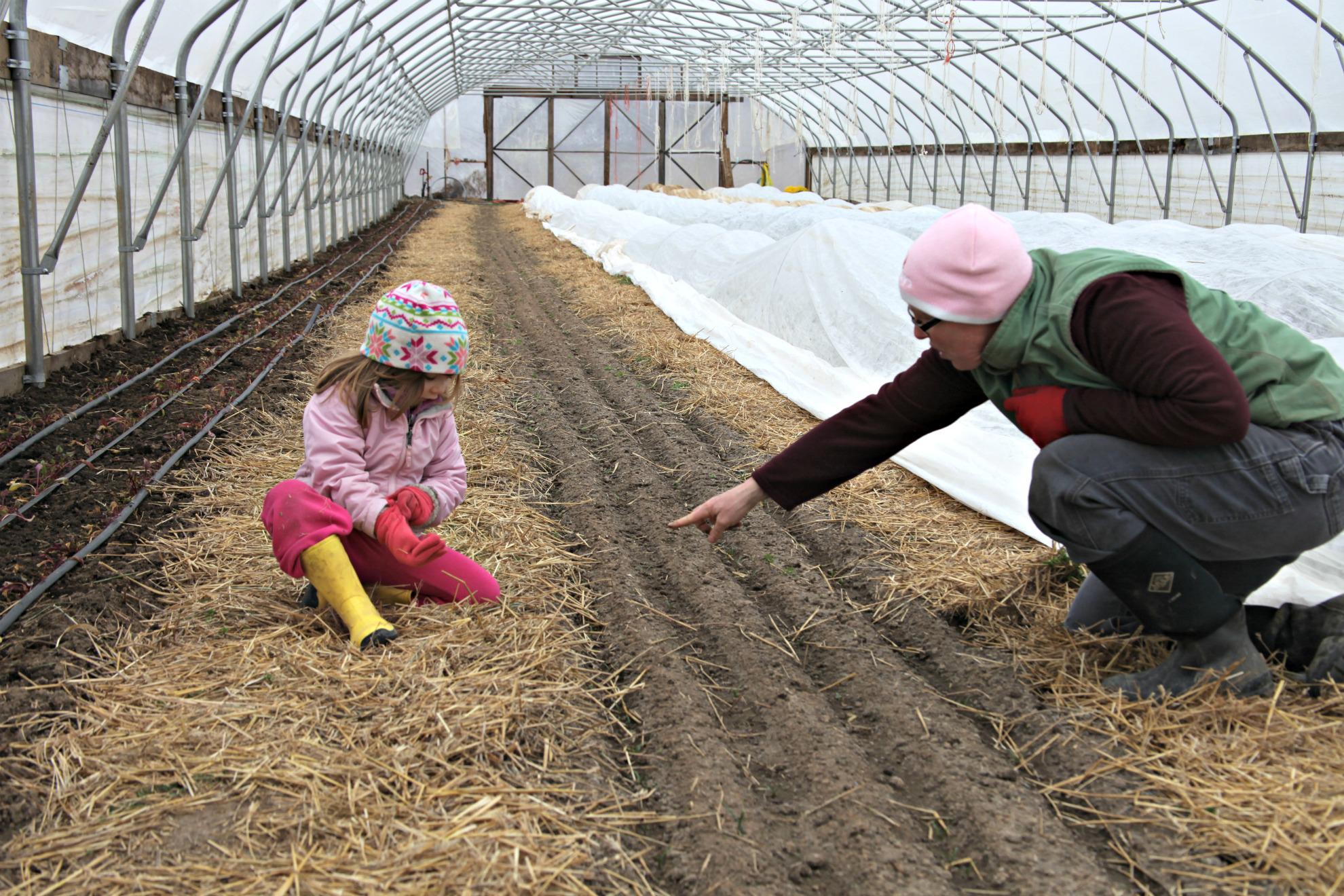
Fig. 11. Consistent weeding and the use of straw mulch can help restrain thrips populations.
Quick Facts
- Thrips are tiny insects that feed by scraping and sucking plant fluids from leaves, and often vector plant diseases.
- Weeds growing inside or outside high tunnels can harbor thrips.
- Thrips have a broad host range. Therefore, management in high tunnels is especially challenging.
- Blue and yellow sticky traps are effective for monitoring thrips populations in high tunnels.
Thrips are a common pest that can be found on many high tunnel crops, plus hundreds of weed species. Two species commonly found in in Utah include Western flower thrips (Frankliniella occidentalis) and Onion thrips (Thrips tabaci). Bean thrips (Caliothrips fasciatus) may also occur in the state
Hosts
Western flower thrips feed on a wide variety of high tunnel vegetable crops such as cucumbers, peppers, lettuce, and tomatoes. (Tomato plants are also susceptible to tomato spotted wilt virus (TSWV) which is spread by Western flower thrips.) Weed hosts include black nightshade, daisy fleabane, dandelion, jimson weed, lamb’s quarters, lantana, pigweed, prickly lettuce, sow thistle, and wild radish. Ornamental hosts that may be grown in high tunnels include carnations, chrysanthemums, gerberas, geraniums, marigolds, and pansies.
Onion thrips are predominately a problem on Allium (onion) crops; however, they can also feed on asparagus, beans, beets, cabbage, cantaloupe, carrots, cauliflower, celery, cowpeas, cucumbers, kale, leeks, parsley, peas, spinach, squash, tomatoes, and turnips. Weed hosts include amaranth, dandelions, mullein, goldenrod, ragweed, kochia, sage, sunflower, and smartweed. Ornamental hosts include carnation and roses.
Bean thrips hosts include asparagus, beans, beets, cabbages, cantaloupes, carrots, cauliflower, fennel, kale, leeks, lettuce, melons, peas, peppers, radishes, Swiss chard, tomatoes, and turnips. Weed hosts include field bindweed, milkweed, mallows, mulleins, redroot pigweed, sow thistle, and prickly lettuce. Ornamental hosts include cannas, California poppy, geraniums, gladiolus, hollyhock, iris, nasturtiums, and sunflowers.
Description
Western Flower Thrips: Eggs are laid within the plant tissue, so are rarely seen. They are white, bean-shaped, and 0.25 mm long. Larvae develop through two instars in which they continually feed. This is then followed by two pupal stages. The pre-pupa has short wing pads and erect antennae. The pupal stage has long wing pads that extend to the tip of the abdomen and antennae that bend backwards. Adults have fully-formed, fringed wings, antennae with eight segments and are almost 2 mm long. Color varies from brown to yellow. Differentiating western flower thrips from other thrips species requires close inspection. Western flower thrips are notable by having eight dorsal plates on the abdomen and a row of short hairs.
Onion Thrips: Eggs range from colorless to a yellow/white and are about 0.2 mm long. Larvae develop through two instars, the first being white and 0.4 mm long and the second being yellowish and 1 mm long. Pupal stages are similar to the western flower thrips. Adult females are about 1 mm long and yellow or tan in color with patches of brown along the thorax and abdomen. Adults are a lighter shade in the spring and summer, and darker in the fall and winter.
Bean Thrips: Eggs are white, bean shaped, and 0.2 mm long. Larvae develop through two instars followed by the pupal stages, which are orange with crimson markings on the abdomen and thorax. Adult bean thrips are about 1 mm long, with dark gray bodies and fringed wings banded with white and gray.
Life Cycle
Thrips species in Utah all have relatively similar life cycles. In mild climates, they overwinter as adults or larvae on both crop debris and weeds. Thrips may have multiple, overlapping generations a year, which is dependent on the temperature. The optimal temperature for thrips development is 86° F. In high tunnels where the temperature is generally warmer, thrips are able to develop at a faster rate. Adults typically survive 20- 30 days. Females will mate with males or reproduce parthenogenetically (females reproduce without male fertilization). They lay their eggs within young vegetative tissue by cutting slits and depositing them beneath the epidermis. The egg stage lasts 5-15 days.
Once hatched, the thrips will develop through two larval instars where they are often found feeding together in groups on new plant growth. Mature larvae drop to the ground to pupate either on the soil surface, under debris, or inside soil crevices.
Damage
Both larval and adult stages of thrips cause damage. They feed with “rasping-sucking” mouthparts, where they pierce plant cells and ingest xylem sap and cell contents. This causes irregular white blotches (referred to as stippling, flecking, or silvering) on foliage and flowers. Heavy feeding can cause the plant leaves to curl, twist, or become stunted. Other crop-specific symptoms include:
- Beans: buds and young leaves become distorted with brown edges
- Onion: feeding causes decreased bulb size or plant death
- Cabbage: bronze discoloration of foliage
- Tomato: small indentations develop on young fruits from thrips egg-laying
Thrips can vector Tomato spotted wilt virus (TSWV) to tomatoes, peppers, and eggplants. Viruses overwinter in plant residue from which adult thrips pick up and then spread from plant to plant throughout the growing season. Thrips can vector other viruses such as Iris yellow spot virus (IYSV) and Impatiens necrotic spot virus (INSV).
Monitoring
In the high tunnel, thrips densities can change rapidly, so it is important to monitor for their presence at least once a week, but ideally every few days. There are a variety of ways to monitor for thrips, and using a combination of these is best.
- Visually inspect plants for feeding symptoms on foliage and flowers. Use a 10-20x hand lens to then look for thrips.
- Shake foliage or blossoms over a tray or beating sheet and count the thrips present.
- Take a portion of the plant for a destructive test by submerging it into a 2% soap/water solution, shaking it, and counting the amount of thrips floating on the surface.
- Sticky traps are effective to monitor for the presence of flying adults. Blue traps are sold strictly for thrips, but yellow traps also attract thrips, as well as a number of other pests, so either can be used. Place traps evenly throughout the high tunnel near susceptible hosts.
- Inspect transplants for thrips adults and larvae before bringing them into the high tunnel.
- Some non-crop plants can be used as early indicators of thrips presence, and monitoring can be focused on these plants rather than the entire crop. Examples of indicator plants that are highly attractive to thrips include petunia (Calypso, Super Blue Magic, Summer Madness, or Carpet Blue) and fava bean (Aquadulce). These varieties can also display early symptoms of INSV and TSWV, but they do not serve as viral hosts. Place indicator plants in-ground or in pots near the susceptible cash crop (one plant per every 20-30 feet).
Management
Cultural Control
- Remove weeds both inside and outside the high tunnel. Many weed species are attractive hosts for thrips, and farms where thrips overwinter will have a greater probability of infestation during the growing season.
- Placing straw mulch at the base of crop plants can help suppress thrips populations by creating a barrier that prevents the larval stage from accessing the soil. Mulching can also lower the soil temperature, which can slow down development.
- Flowering trap crops (planted or in pots) such as marigold and chrysanthemum are highly attractive to thrips, preventing thrips from congregating on the cash crop. The trap crops should be treated with a selected method (insecticide, biocontrol, or estruction).
- Overhead irrigation can decrease thrip populations by physically washing them off the plants.
Biological Control
- Arthropod predators of thrips that occur in Utah include banded thrips (Aeolothrips spp.), green lacewing larvae, predatory mites, big-eyed bug, and minute pirate bug. However, these natural enemies may not commonly occur inside high tunnels when the tunnel is kept closed or outside temperatures are cool (fall, winter, early spring).
- The predatory mite, Amblyseius swirskii, can be purchased from insectaries and released in the high tunnel. Sachets, which are small bags containing the mites and a food source, allowing for slow but consistent release over several weeks. The bags can be hung above or on plants. Mites can also be purchased in shakers, and dispensed where thrip populations are dense.
Chemical Control
It is important to choose insecticides carefully, as application in high tunnels may not be allowed on the product label. In addition, application in enclosed spaces may require additional personal protective equipment. Because thrips reproduce rapidly, in high numbers, and without mixing genes with males (parthenogenetically), they may develop resistance to insecticides that are applied repeatedly. This is especially true of products containing organophosphates, synthetic pyrethroids, and carbamates.
Insecticides are most effective when used alongside other cultural management practices. Often, organic options such as insecticidal soap or a horticultural oil are highly effective.
Examples of effective home use and commercial insecticides registered in Utah for high tunnels.
| Active Ingredient | Residential Brand Name | Commercial Brand Names | MoA* |
|---|---|---|---|
| pyrethrin | Garden Tech Worry FreeB | Azera, EverGreen Crop Protection | 3 |
| pyrethrin + Beuveria Bassiana | BotaiGard MAXX | 3 | |
| zeta-cypermethrins | Garden Tech Sevin | 3 | |
| neem oil +_pyrethrin3 | Ferti-lome Triple ActionB | 3 | |
| spinosad | Bonide Captain Jack'sB | EntrustOB, SuccessB | 5 |
| insecticidal soap | SaferO, Natural GuardO, Bayer NatriaO | M-Pede | NC |
| oils: neem, canola, rosemary, clvoe, and cotton-seed | Bater Natria Multi InsectB, Monterey Neem OilB, Monterey All Natural Mite and InsectB, Natural Guard NeemB | Ecoworks EC Botanical InsecticideO, RANGOO | NC |
*Mode of Action (MoA) is a classification number based on guidelines from the Insecticide Resistance Action Committee. Rotate among insecticide classes to reduce the development of resistance.
O Organically certified insecticide products.
B Biological pesticide
NC Not Classified
References and Further Reading
- Cranshaw, W., 2004. Garden Pests of North America: The Ultimate Guide to Backyard Bugs. Princeton, NJ. Princeton University Press.
- Cannon, C., Murray, M., Alston, D., & Drost, D. 2018. 2018 Utah Vegetable Production and Management Guide. Logan, UT: Utah State University Extension.
- Flint, M. L. 2018. Pests of the Garden and Small Farm: A Growers Guide To Using Less Pesticide. Oakland, CA: University of California, Agriculture and Natural Resources
- McKinley, M., 2001. Ortho’s Home Gardener’s Problem Solver. Des Moines, IA. Meredith Corporation Ortho Books.
- Mahr, D., Whitaker, P., and Ridgway, N., 2008. Biological Control of Insects and Mites: An Introduction to Beneficial Natural Enemeis and Their Use in Pest Management. Madison, WI. Wisconsin Cooperative Extension Publishing.
- Nechols, J. R., 1995. Biological Control in the Western United States. Oakland, CA: University of California, Agriculture and Natural Resources.
- Capinera, J., 2001. Handbook of Vegetable Pests. Orlando, FL: University of Florida
Image Credits
1 University of West Virginia - Extension
2 ShutterStock
3 Kansas State University - Entomology
4 Centre for Biodiversity Genomics
5 University of California, Division of Agriculture and Natural Resources
6 J. P. Sanderson
7 Arkansas Sustainable Agriculture
8 Ontario Ministry of Agriculture
9 kcur.org
Related Research


